
The Sagrada Familia stands as a masterpiece of modern architecture and a symbol of Barcelona's cultural heritage. Designed by the renowned architect Antoni Gaudí, this extraordinary basilica has been under construction since 1882, captivating visitors with its intricate details and grand scale.
In this guide, we delve into **Exploring the Iconic Sagrada Familia: Essential Information for Visitors in Barcelona**, providing you with everything you need to know to make the most of your visit. From ticketing tips to architectural highlights, prepare to be inspired by one of the most visited monuments in the world.
The History and Design of the Sagrada Familia: A Masterpiece by Gaudí
The Sagrada Familia, a project that began in 1882, was envisioned by the brilliant architect Antoni Gaudí. His unique approach combined Gothic and Art Nouveau styles, creating a structure that is as much a sculpture as it is a building. Gaudí's vision was deeply influenced by his love for nature, which is evident in the organic forms and vibrant colors of the basilica. Each element of the design aims to reflect the beauty of the natural world, making the Sagrada Familia a true architectural marvel.
One of the most remarkable features of the Sagrada Familia is its intricate facade designs, which tell stories from the Bible. The basilica features three grand facades:
- The Nativity Facade - Celebrating the birth of Christ with detailed sculptures.
- The Passion Facade - A stark contrast, reflecting the suffering of Christ.
- The Glory Facade - Still under construction, it will depict the glory of Jesus and the path to God.
Gaudí's innovative use of geometry and light plays a significant role in the basilica's design. The towers, each representing different religious figures, reach toward the heavens, symbolizing a connection between earth and the divine. The planned design includes a total of 18 towers, with the tallest one dedicated to Jesus Christ, expected to reach a height of 172.5 meters, making it the tallest church in the world.
As the Sagrada Familia continues to evolve, it reflects Gaudí's belief that a true masterpiece is never finished. Construction efforts have adapted over the years, utilizing modern technology while staying true to Gaudí's original vision. Visitors today can witness this blend of historical craftsmanship and contemporary techniques, ensuring that the basilica remains a vibrant part of Barcelona's skyline for generations to come.
Essential Tips for Visiting the Sagrada Familia: What You Need to Know
When planning your visit to the Sagrada Familia, it's essential to book your tickets in advance. This will help you avoid long queues and ensure you have a specific time slot to explore the basilica. Consider purchasing a guided tour ticket for a richer experience, as knowledgeable guides can provide insights into Gaudí's vision and the basilica's intricate details.
Arrive early to enjoy the atmosphere without the crowds. Morning light enhances the stunning stained glass windows, casting beautiful colors throughout the interior. Dress comfortably, as you may spend several hours exploring different sections of the basilica and the surrounding area. It's also wise to check the weather forecast since the experience can vary significantly based on the time of day and light conditions.
While visiting, respect the sacred nature of the site. Maintain a quiet demeanor, especially in areas designated for reflection and prayer. Additionally, be mindful of photography policies, as flash photography may be prohibited in certain areas. To further enhance your visit, consider downloading the Sagrada Familia app, which offers audio guides and augmented reality features for a more interactive experience.
In summary, keep these essential tips in mind for your visit to the Sagrada Familia:
- Book tickets online in advance.
- Arrive early to enjoy the best light and fewer crowds.
- Dress comfortably for a lengthy exploration.
- Respect the sanctity of the site during your visit.
- Use the official app for additional insights and features.
Exploring the Unique Features of the Sagrada Familia: Architecture and Symbolism
The Sagrada Familia is renowned not only for its striking architectural style but also for its deep symbolism. Each element of Gaudí's design is infused with meaning, reflecting his vision of a spiritual journey through art. The interplay of light and shadow within the basilica serves to highlight the divine, making every visit a unique experience. Key aspects of this symbolism include:
- The Twelve Towers: Representing the apostles, each tower embodies a connection to faith.
- Natural Elements: Organic shapes reflect Gaudí's admiration for nature and its spiritual significance.
- Stained Glass Windows: The vibrant colors are designed to evoke different emotions and enhance the sacred atmosphere.
The architectural style of the Sagrada Familia is a fusion of Gothic and Art Nouveau, characterized by fluid forms and intricate details. Gaudí’s innovative approach to structure allows for an extraordinary balance of strength and beauty. The basilica's expansive nave draws the eyes upward, symbolizing an aspiration towards the divine. Notable architectural features include:
- Hyperboloid Structures: These unique shapes provide stability and allow natural light to flood the interiors.
- Nature-Inspired Columns: Resembling trees, they branch out to support the ceiling, creating a forest-like ambiance.
- Facade Narratives: Each facade tells a different story from the Bible, inviting contemplation and reflection.
Gaudí's visionary use of geometry also contributes to the Sagrada Familia's uniqueness. His designs employ a variety of shapes—parabolas, hyperbolas, and planes—to create a harmonious and dynamic structure. This mathematical precision is not just functional but also enhances the overall aesthetic, symbolizing the connection between the earthly and the heavenly. The integration of these geometric elements is vital for:
- Structural Integrity: Providing the necessary strength to support the enormous weight of the basilica.
- Aesthetic Appeal: Creating visually stunning contrasts and flows that captivate visitors.
- Dynamic Lighting: Allowing natural light to play throughout the space, enriching the experience of the interiors.
In conclusion, the Sagrada Familia stands as a testament to Gaudí's genius, where architecture and symbolism intertwine to create a breathtaking spiritual experience. Each visit offers a new perspective on this evolving masterpiece, reminding us of the enduring power of faith and creativity. As construction continues, the basilica remains a living work of art, inviting all to explore its many layers of meaning.
How to Get Tickets for the Sagrada Familia: A Comprehensive Guide
To visit the Sagrada Familia, purchasing tickets in advance is highly recommended to secure your entry and avoid long wait times. Tickets can be obtained through the official website, where you can choose between different options such as standard tickets or more immersive guided tours. Prices may vary based on the type of experience you select, so it’s wise to compare the benefits of each.
When booking your tickets, you have the option to choose between specific time slots. This is crucial, especially during peak tourist season, as it allows for a more relaxed visit. Make sure to arrive a few minutes early to check in and get settled before your scheduled time. Additionally, keep an eye out for special promotions or discounts that may be available for certain days or groups.
If you prefer a more flexible experience, consider purchasing a skip-the-line ticket. This option not only saves time but also provides access to exclusive areas of the basilica that are often overlooked by general visitors. For those interested in a deeper understanding of Gaudí's vision, audio guides are available for rent at the entrance, enhancing your exploration of this architectural marvel.
Lastly, remember that cancellations and changes to your ticket may be subject to specific policies. Always check the terms and conditions when purchasing your tickets to ensure a smooth experience. By planning ahead and choosing the right ticket options, you can make the most of your visit to the iconic Sagrada Familia.
The Best Times to Visit the Sagrada Familia: Avoiding Crowds and Long Waits
When planning your visit to the Sagrada Familia, the timing of your trip can significantly enhance your experience. To avoid the largest crowds, consider visiting early in the morning, ideally right at opening time. This allows you to appreciate the serene atmosphere and the stunning play of light through the stained glass windows. Additionally, weekdays are generally less busy than weekends, making them a preferable choice for visitors.
Another excellent time to visit is during the off-peak months of late fall and winter, specifically from November to February. During these months, the number of tourists decreases significantly, providing a more intimate experience as you explore the basilica's intricate details. However, be mindful of shorter daylight hours; planning your visit around midday ensures you still enjoy the best natural light.
For those looking to avoid long waits, purchasing tickets online with a specific time slot is crucial. This not only guarantees your entry but also allows you to bypass the longer lines that form throughout the day. If you prefer a guided tour, consider booking during the early afternoon when the crowds typically thin out, providing you with the chance to delve deeper into Gaudí's architectural vision without feeling rushed.
In summary, the best times to visit the Sagrada Familia to avoid crowds and long waits include:
- Weekdays: Generally less crowded than weekends.
- Early mornings: Arrive right at opening time for a quieter experience.
- Off-peak months: November to February offers fewer visitors.
- Afternoon guided tours: Ideal for a more relaxed exploration.
Unveiling the Secrets of the Sagrada Familia: Lesser-Known Facts for Visitors
While the Sagrada Familia is widely celebrated, many of its lesser-known facts may surprise visitors. For instance, did you know that Gaudí's original plans were only partially completed before his untimely death in 1926? As a result, the basilica has witnessed continuous evolution, with architects interpreting and expanding upon his vision. This ongoing construction process, aimed for completion in 2026, marks the centenary of Gaudí's passing.
Another intriguing aspect of the Sagrada Familia is its unique financing method. The basilica is funded entirely by private donations, which allows it to remain independent of government support. This practice reflects Gaudí's belief that the church should be built by the faithful rather than by public funds. Consequently, visitors can contribute to its completion simply by purchasing tickets or making donations on-site.
Many visitors are unaware of the symbolism embedded within the basilica's design. For instance, the three grand facades not only depict distinct biblical stories but also embody the Holy Trinity. Additionally, the number of towers is meticulously chosen; each one carries significant religious meaning, representing various saints and apostles. This intricate layering of meaning enhances the overall spiritual experience for those who take the time to explore these elements.
Finally, the Sagrada Familia features a remarkable integration of nature through its architectural elements. Gaudí designed the columns to resemble trees, branching out to support the ceiling. This naturalistic approach not only creates a forest-like ambiance but also symbolizes the connection between the divine and the earth. As visitors traverse the basilica, they are enveloped in a tangible representation of Gaudí's philosophy of harmony with nature.
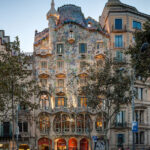 Gaudí's Unique Residence for Batlló Family
Gaudí's Unique Residence for Batlló Family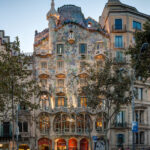 Why Casa Batlló is Significant
Why Casa Batlló is Significant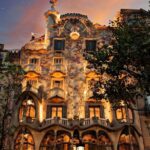 Casa Batlló: A Famous Landmark
Casa Batlló: A Famous LandmarkIf you want to know other articles similar to Exploring the Iconic Sagrada Familia: Essential Information for Visitors in Barcelona you can visit the category WHERE YOU CAN GO.
Leave a Reply

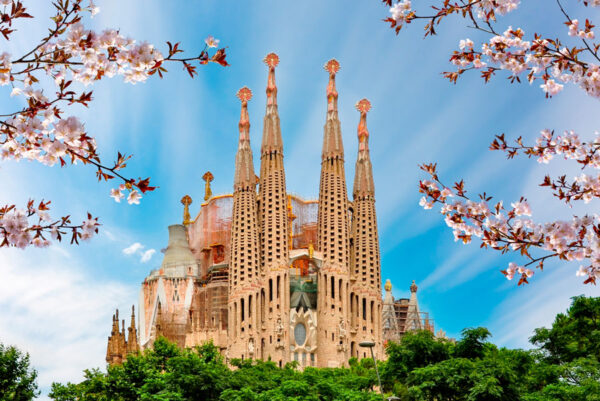
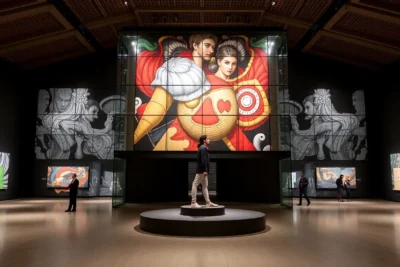
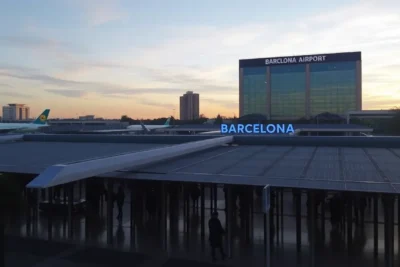

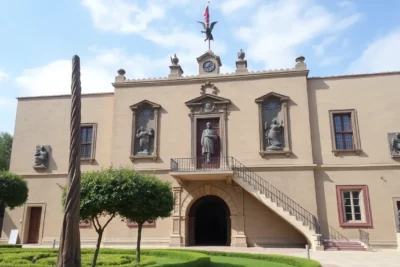
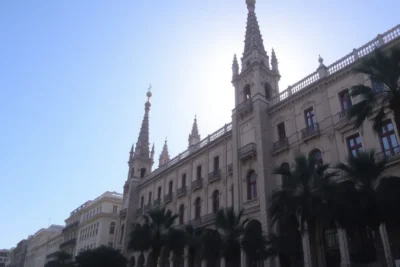
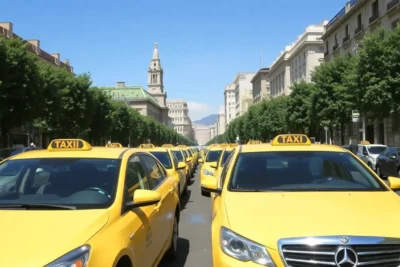
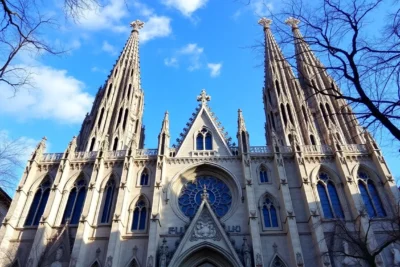
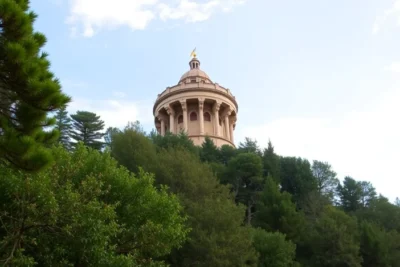
Read more!